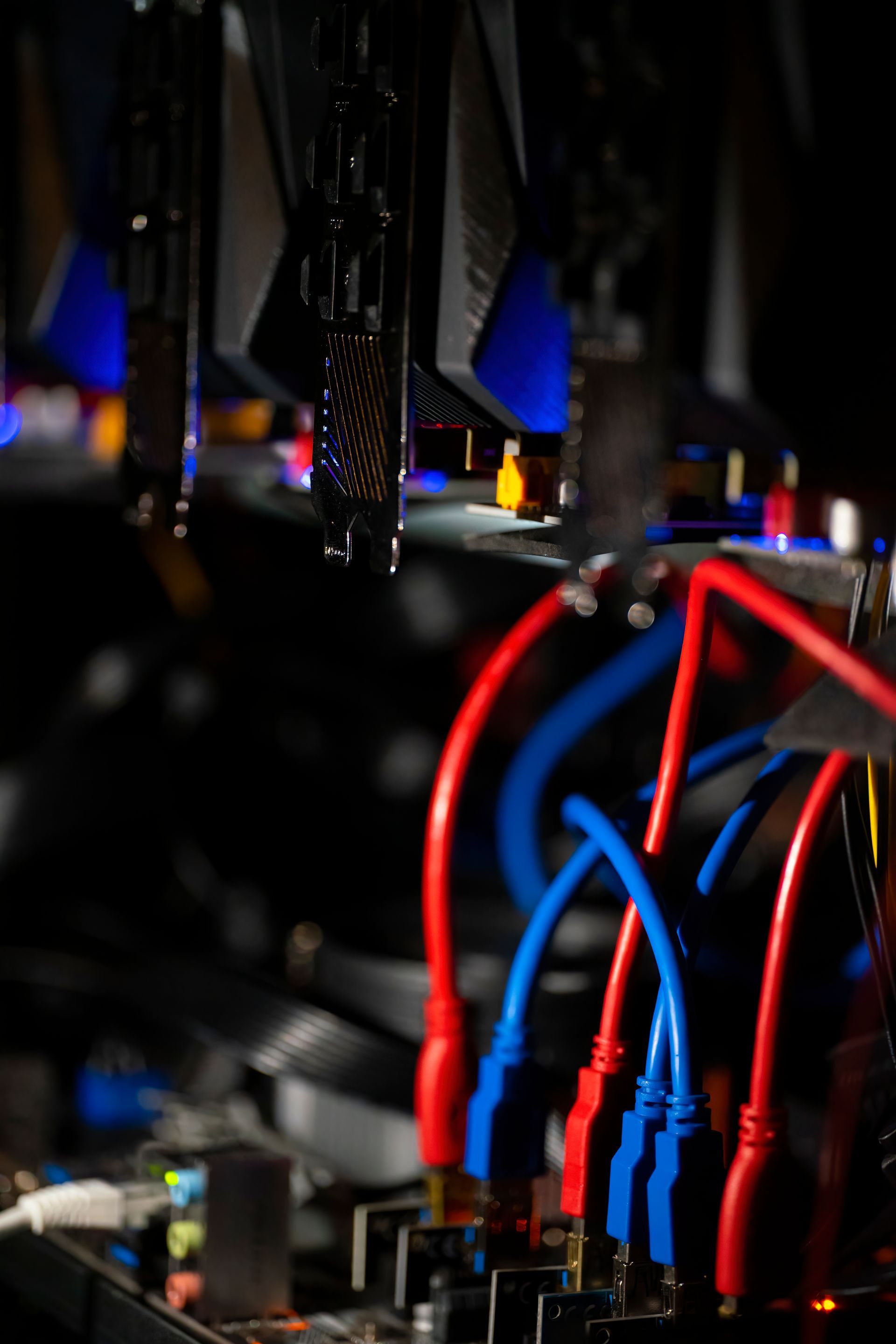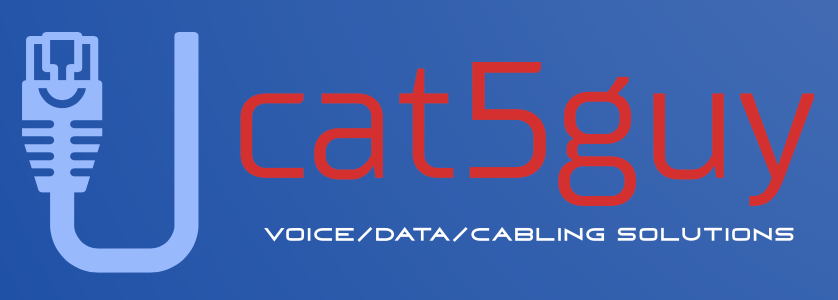
Fiber Optic vs. Ethernet: Which is Right for Your Business?
In today’s digital world, businesses rely on high-speed and reliable networks to stay competitive. Whether it’s handling large data transfers, supporting cloud-based applications, or ensuring seamless video conferencing, the right cabling infrastructure is critical. Two of the most common options for networking are fiber optic cabling and ethernet cabling. But which one is best suited for your business?
Both
fiber optic and
ethernet cabling have their own advantages and limitations. Factors such as
cost, installation, speed, reliability, and distance coverage play a major role in determining the right option. In this article, we’ll explore the key differences between the two, discuss their pros and cons, and help you decide which solution is the best fit for your business. If you’re looking for
fiber optic installers near me or expert
ethernet cable installers,
Cat5 Guy can provide professional
network cabling contractor services to meet your needs.
What is Ethernet Cabling?
Ethernet cabling has been the standard for wired networking for decades. It is commonly used in homes, offices, and commercial buildings to connect computers, servers, and other network devices.
Ethernet cables, such as
Cat5e, Cat6, and Cat7, use copper wires to transmit data through electrical signals. They are widely available and offer
fast data transfer speeds, making them a popular choice for businesses that need cost-effective and reliable networking.
Advantages of Ethernet Cabling
One of the biggest benefits of ethernet wiring service is its affordability. Compared to fiber optics, ethernet cabling is significantly cheaper to install, making it an attractive option for small and medium-sized businesses. Additionally, ethernet cables can support speeds up to 10 Gbps over short distances, which is more than sufficient for most office environments.
Another advantage of ethernet cabling is its
ease of installation and maintenance. Unlike fiber optics, which require specialized expertise, ethernet cables are relatively simple to install.
Many ethernet cable installers can quickly set up a network with minimal downtime.
Limitations of Ethernet Cabling
Despite its benefits, ethernet cabling has several limitations. The biggest drawback is distance, most ethernet cables can only transmit data up to 100 meters (328 feet) before the signal begins to degrade. This makes ethernet a less suitable option for businesses that require long-distance connectivity.
Additionally, ethernet cables use electrical signals to transmit data, making them vulnerable to electromagnetic interference (EMI) from nearby electronic devices, power lines, and industrial equipment. This interference can lead to network slowdowns and connection instability, especially in environments with high electrical activity.
For businesses with high data demands and long-distance connectivity requirements,
fiber optic cabling installation may be a better alternative.
What is Fiber Optic Cabling?
Fiber optic technology is revolutionizing network infrastructure by offering
higher speeds, longer transmission distances, and increased reliability. Unlike ethernet cables, fiber optic cabling transmits data using
light signals instead of electrical signals, making it immune to EMI.
Benefits of Fiber Optic Cabling
One of the most significant advantages of fiber optics is speed. Fiber optic networks can achieve speeds of up to 100 Gbps, making them ideal for businesses that rely on high-speed internet for cloud computing, VoIP communication, video conferencing, and large-scale data transfers.
Fiber optics also support long-distance data transmission. Unlike ethernet, which has a maximum range of 100 meters, fiber optic cables can transmit data up to 25 miles (40 kilometers) without signal loss. This makes fiber the preferred choice for businesses with multiple locations, data centers, or large office buildings.
Another key benefit of fiber optics is durability. Traditional copper-based cables are susceptible to wear and tear, corrosion, and environmental conditions. Fiber optic cables, on the other hand, are more resistant to temperature fluctuations, moisture, and harsh weather, ensuring long-term reliability.
Businesses searching for fiber optic installers near me can invest in a future-proof networking solution that will continue to meet growing internet demands for years to come.
Challenges of Fiber Optic Cabling
Despite its advantages, fiber optic installation has a few drawbacks. The initial installation costs are higher compared to ethernet cabling. Fiber optic materials and specialized labor can make the upfront investment more expensive. However, many businesses find that the long-term benefits and reduced maintenance costs make fiber optics a cost-effective solution over time.
Another challenge is that
fiber optic installation requires specialized expertise. Unlike ethernet cabling, which is relatively simple to set up, fiber optics require skilled technicians for installation and repairs. Working with an experienced
network cabling contractor
is essential to ensure proper setup and performance.
Fiber Optic vs. Ethernet: Key Comparisons
To help you decide which option is best for your business, let's compare
fiber optic cabling and
ethernet cabling based on several key factors.
1. Speed
Ethernet: Supports speeds up to
10 Gbps with Cat6a cables.
Fiber Optic: Can achieve speeds of up to
100 Gbps, offering superior performance.
2. Distance
Ethernet: Limited to
100 meters (328 feet) before experiencing signal loss.
Fiber Optic: Can transmit data up to
25 miles (40 km) without signal degradation.
3. Interference Resistance
Ethernet: Susceptible to
EMI from electrical devices, which can affect performance.
Fiber Optic:
Immune to EMI, ensuring stable and reliable connections.
4. Installation Cost
Ethernet: More affordable and easier to install.
Fiber Optic: Higher initial costs but
long-term savings due to durability and low maintenance.
5. Security
Ethernet: Vulnerable to
data breaches through electromagnetic interception.
Fiber Optic: More secure, as it is difficult to tap into fiber optic cables without being detected.
Which One Should You Choose for Your Business?
The best choice depends on your business’s size, needs, and budget. If your business requires a cost-effective, short-distance networking solution, ethernet cabling is a practical option. However, if you need high-speed, long-distance connectivity with minimal interference, fiber optics is the superior choice.
To help determine the right solution, consider the following:
Do you need
ultra-fast internet speeds for cloud computing or video conferencing?
Will your network cover
long distances across multiple buildings or locations?
Are you concerned about
security and data integrity?
What is your
budget for installation and long-term maintenance?
If you’re still unsure, consulting a professional
network cabling contractor can help assess your business's specific networking needs and recommend the best solution.
Upgrade Your Network with Cat5 Guy
Whether you're installing a new network or upgrading your existing infrastructure, working with a trusted network cabling contractor ensures a seamless and efficient installation process.
At Cat5 Guy, we specialize fiber optic cabling installation. Our expert team provides tailored solutions to help businesses enhance network performance, improve reliability, and future-proof their infrastructure.
Looking for fiber optic installers near me? Our team offers high-speed networking solutions designed to meet your specific needs. Learn more about the benefits of fiber optic networks by checking out our blog article.
To schedule a free consultation, visit our service areas or contact us today through our contact page.
Upgrade your business network with Cat5 Guy, your trusted partner in structured cabling, fiber optic installation, and high-performance network solutions.
Areas We Serve
- Los Angeles, CA Los Angeles, California, United States
- Beverly Hills, CA Beverly Hills, California, United States
- Commerce, CA Commerce, California, United States
- Culver City, CA Culver City, California, United States
- El Segundo, CA El Segundo, California, United States
- Gardena, CA Gardena, California, United States
- Pico Rivera, CA Pico Rivera, California, United States
- Santa Fe Springs, CA Santa Fe Springs, California, United States
Get started with Cat5Guy today!
Whether you need a new network installation, a Wi-Fi upgrade, or emergency cabling repairs, we’re here to help.


Get a Free Quote Today!
Contact Us
We will get back to you as soon as possible
Please try again later

Contact:
📞 Phone: (213) 273-3561
📧
Email: mike@cat5guy.com